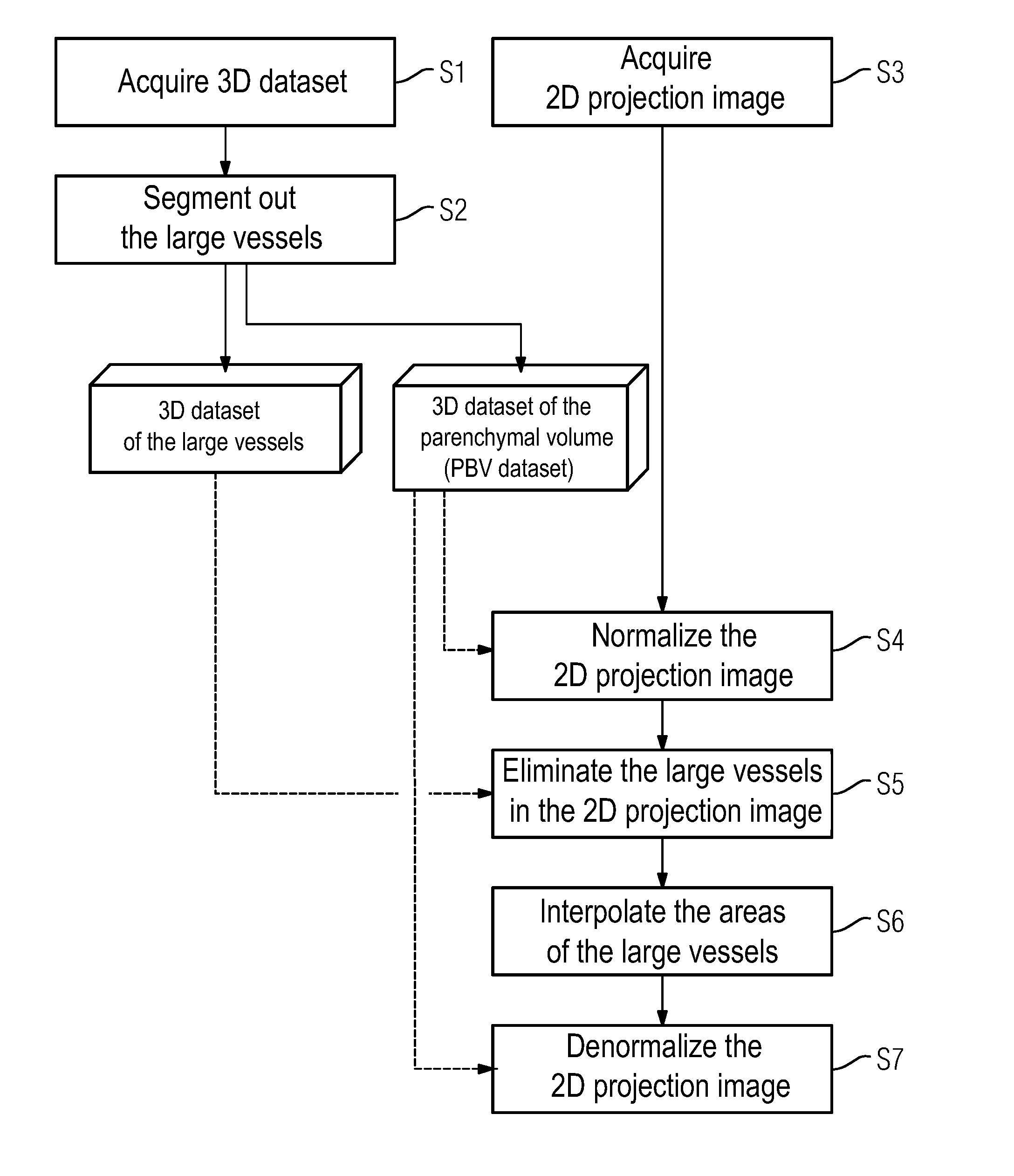Generating a 2D Projection Image of a Vascular System
a vascular system and projection image technology, applied in the field of generating a 2d projection image of a vascular system, can solve the problems of poor temporal resolution, restrictions on the use of three-dimensional techniques during a treatment, and the inability to eliminate the large vessels from the projection image, so as to achieve the segmentation of the large vessels easier and more accurate
- Summary
- Abstract
- Description
- Claims
- Application Information
AI Technical Summary
Benefits of technology
Problems solved by technology
Method used
Image
Examples
Embodiment Construction
[0035]The individual method acts according to an exemplary embodiment are described below with reference to FIG. 1. In a first act S1, a 3D dataset of the vascular system is acquired by an angiography system, for example a C-arm device. The dataset may be acquired on the basis of a difference calculation between a fill image in which the vascular system is filled with contrast agent statically, e.g., uniformly or in a “steady state”, and a reference image that is free of contrast agent. The result of the 3D acquisition is a three-dimensional, static visualization of the vascular system. The acquisition contains not only the large afferent and efferent vessels (e.g., arteries, veins) but also the vessels of the parenchyma (in particular, the so-called microcirculation). All of the vessels may be segmented if necessary.
[0036]In a second act S2, those vessels whose size exceeds a predetermined limit value are segmented. This may be carried out on the basis of known segmentation methods...
PUM
 Login to View More
Login to View More Abstract
Description
Claims
Application Information
 Login to View More
Login to View More - R&D
- Intellectual Property
- Life Sciences
- Materials
- Tech Scout
- Unparalleled Data Quality
- Higher Quality Content
- 60% Fewer Hallucinations
Browse by: Latest US Patents, China's latest patents, Technical Efficacy Thesaurus, Application Domain, Technology Topic, Popular Technical Reports.
© 2025 PatSnap. All rights reserved.Legal|Privacy policy|Modern Slavery Act Transparency Statement|Sitemap|About US| Contact US: help@patsnap.com



